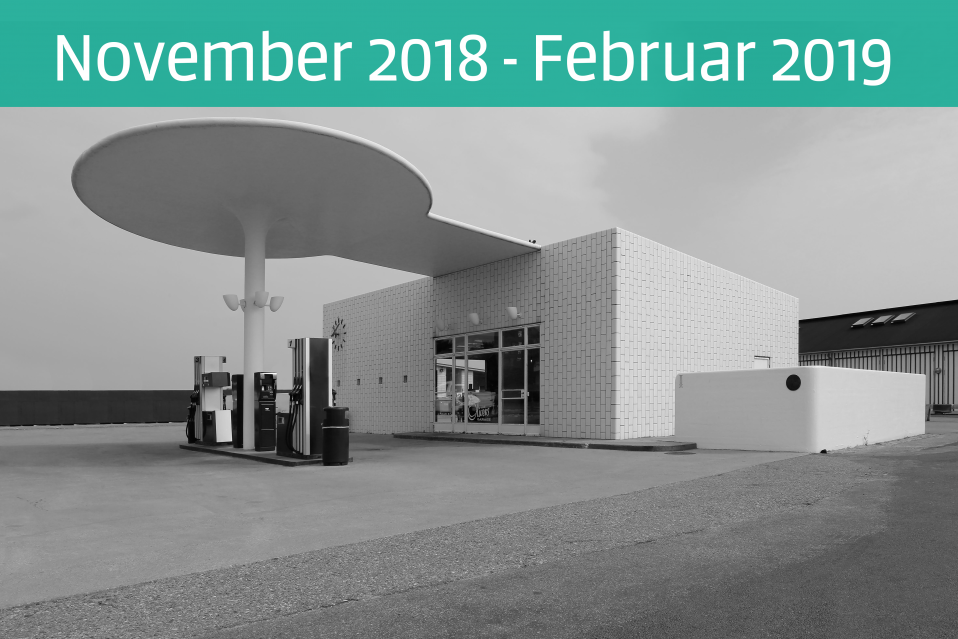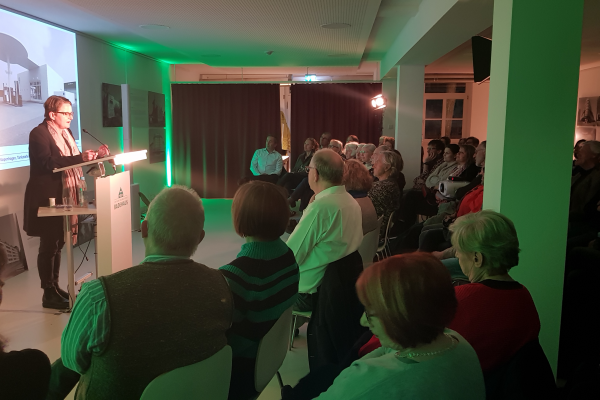In 2019 the Bauhaus marked its 100. anniversary. Ahead of this jubilee and as part of the nation-wide festivities, the BADEHAUS exhibited pictures of Jewish architects, whose work was in keeping with this architectonic modernity.
Many Jewish architects shared the enthusiasm for the architectonic modernity and daring aesthetics propagated by the Bauhaus school with their flat roofs, large windows and glass alleys and deployment of modern materials. The Jewish architect Fritz Landauer for example built the new synagogue in Augsburg between 1913-17, which he topped with a 29 meter tall cupola made from steel reinforced concrete, which for the times was a groundbreaking construction. A few years later he designed the Villa Strauss (1930) in Augsburg and the House Hirschmann (1930/37) in Fürth. Both buildings are exemplary for the “Neue Sachlichkeit”.
Jewish architects of modernity, such as Erich Mendelsohn, Bruno Ahrends, Richard Kaufmann, Ernst Ludwig Freud or Fred Forbat, who taught at the Bauhaus in Weimar, were all forced to emigrate from Europe and its political upheavals. The fate of some of these architects, who had fled to the UK, Palestine or the USA, received attention overnight, so that in the best cases they were able to continue with their architectural offices or academic careers at universities in their countries of destination. However, fleeing National-Socialistic Germany was not always successful and crowned by a new career. Many of their fates ended in tragedy. One story of success, though, is the story of constructing the “white city” within Tel Aviv, Israel. This quarter was instrumental for making the Bauhaus name a catchphrase and true legend. Today, the white city covers around 4,000 buildings, most of which were erected in the Bauhaus and International style.
A film by the historian Robbi Waks, who grew up in the Föhrenwald DP camp, accompanies the exhibition.
The vernisage for the exhibition was on November 11, 2018 with the finissage held on February 24, 2019.





